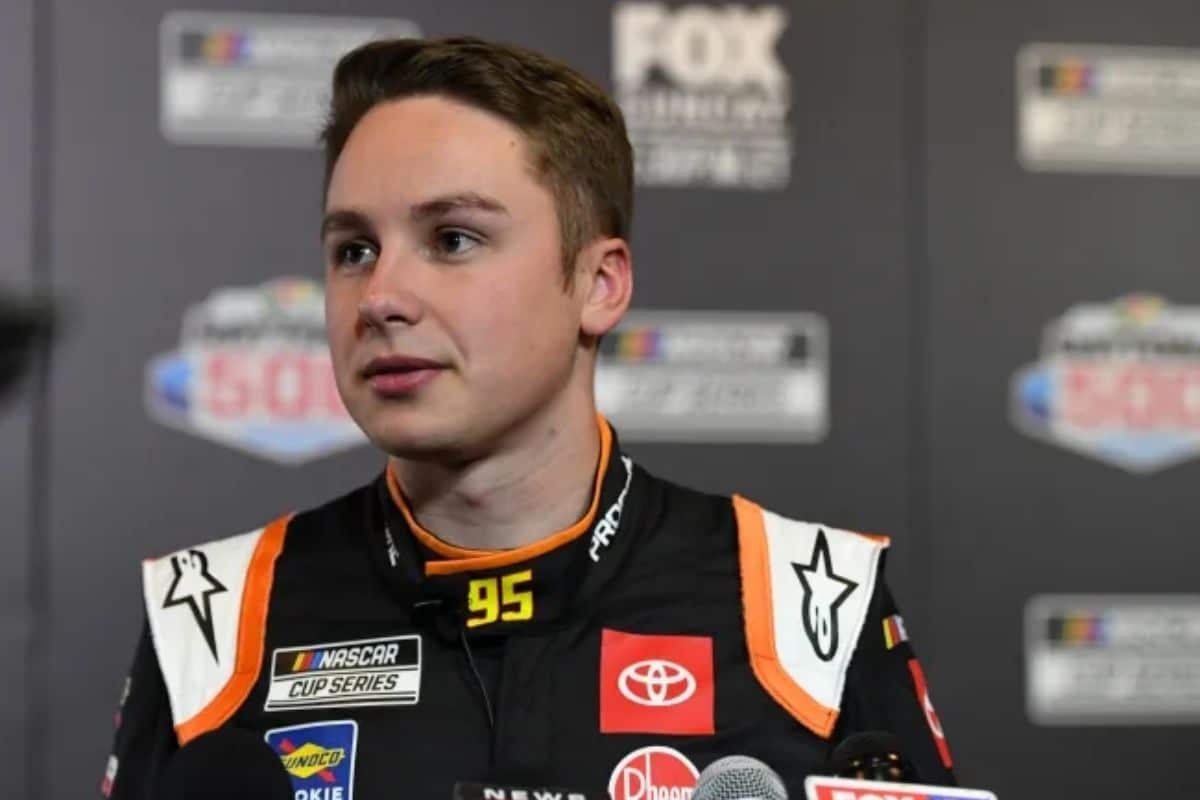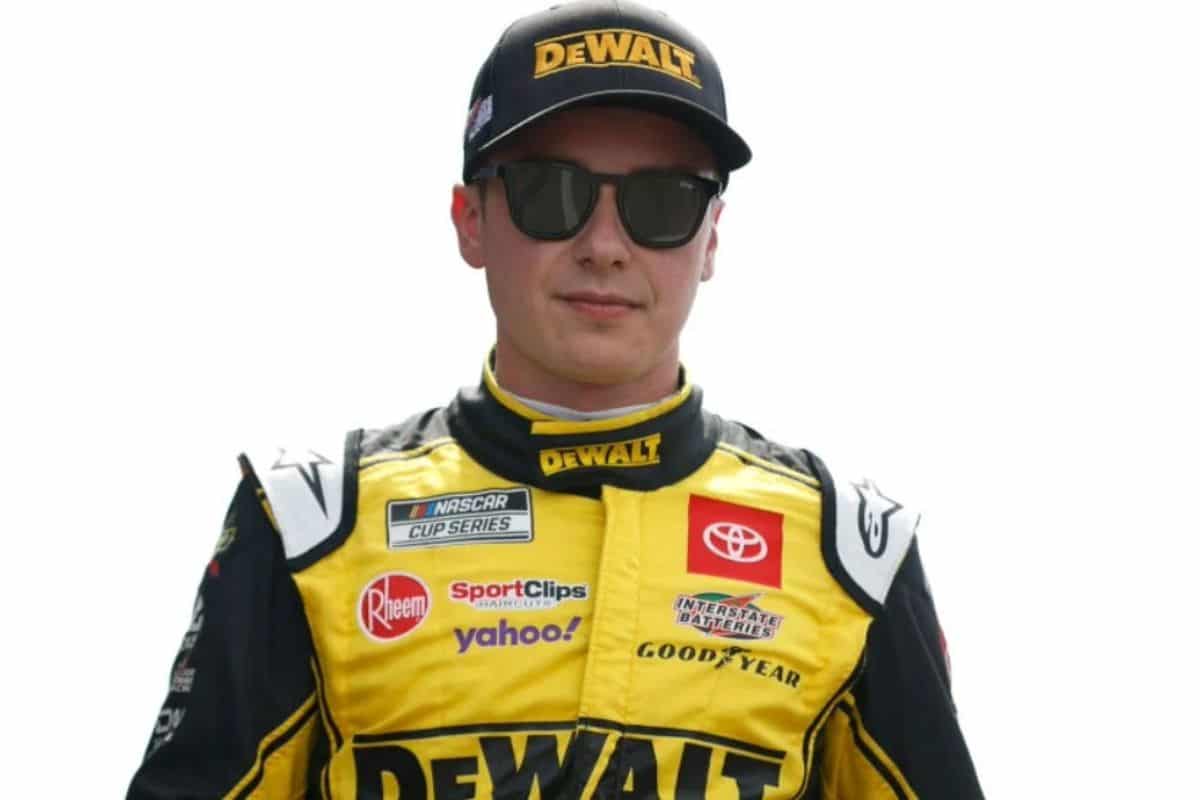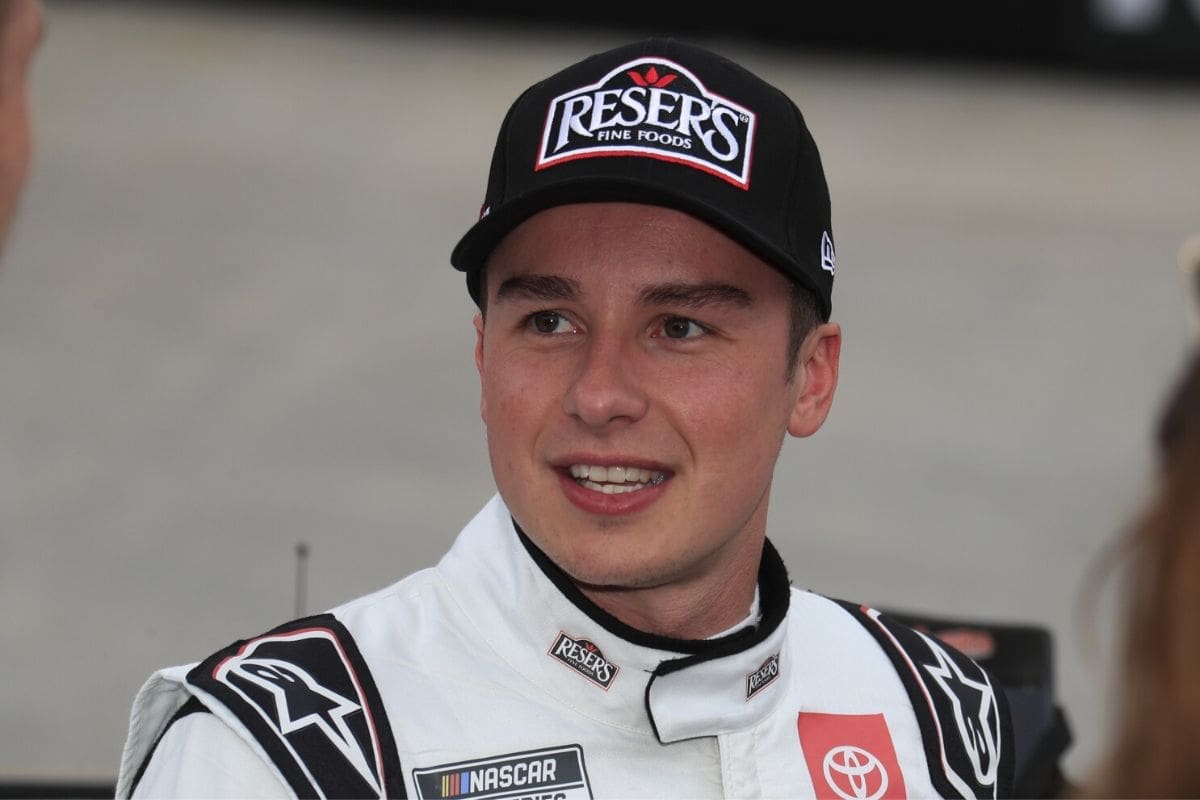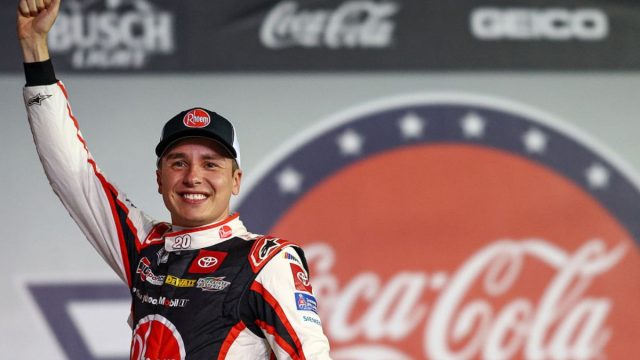Christopher Bell Critiques Kevin Harvick: Christopher Bell‘s recent critique of Kevin Harvick‘s driving technique has sparked a sophisticated discussion within NASCAR circles. Bell, whose racing style is characterized by meticulous precision and strategic composure, has highlighted Harvick’s aggressive and often erratic actions as a point of concern. This contrast shows the diverse tactical approaches within the sport and raises questions about the balance between adaptability and predictability on the track. As fans and analysts dissect these differing methodologies, the broader implications for driver performance and race outcomes become a focal point of interest. This debate emphasizes the evolving dynamics of competitive racing.
Key Highlights
- Bell describes Harvick’s driving style as erratic with aggressive wheel movements.
- Bell contrasts his stable and controlled technique with Harvick’s adaptability and immediate reaction.
- Bell emphasizes the risks associated with Harvick’s aggressive driving approach.
- Bell uses SMT data to highlight the differences in their driving styles.
- Bell believes in precision and predictability, unlike Harvick’s more volatile style.
NASCAR Data Analysis
NASCAR data analysis provides a detailed and precise record of every move a driver executes, enabling in-depth scrutiny of race strategies and performance. This exhaustive data collection serves as both a tool and a goldmine for teams aiming to fine-tune their race strategies and optimize performance on the track. The rich dataset includes telemetry data, lap times, throttle positions, braking patterns, and even environmental variables like track temperature and wind speed, offering a multi-faceted view of each race.
For drivers and teams, this data can be a double-edged sword. On one hand, it offers valuable insights into areas that require improvement or adjustment. For example, variations in throttle modulation or braking points can pinpoint inefficiencies or reveal opportunities for tactical adjustments. On the other hand, the sheer volume and granularity of this data can be overwhelming, necessitating advanced analytical capabilities to extract actionable intelligence.
Joe Gibbs Racing, renowned for its approach to data analysis, utilizes this information to enhance its competitive edge. The ability to drill down into the minutiae of each driver’s performance allows the team to develop bespoke strategies tailored to individual strengths and weaknesses. This data-centric approach likely contributed to Christopher Bell’s recent victory, highlighting the crucial role of data analysis in modern NASCAR racing.
However, while data analysis can show paths to success, it also opens the door to scrutiny. Every decision, from pit stop timing to in-race adjustments, is dissected and debated, adding another layer of complexity to the competitive racing.

Insights from Christopher Bell on Driving Style and SMT Data
In a recent discussion on Kevin Harvick’s podcast, Christopher Bell delved into the intricacies of his driving style and the critical role of SMT (Sports Media Technology) data in refining his performance. Bell, the 2024 Coca-Cola 600 winner, emphasized how vital it is to dissect every aspect of a race, from braking points to acceleration curves, to continually evolve and excel.
Bell highlighted the regular team meetings post-race, typically held on Mondays or Tuesdays, where data analytics play an important role. These sessions often place Bell in the ‘hot seat,’ reflecting a transparent environment where performance is scrutinized, and areas for improvement are identified.
Bell’s methodical approach, described as steady and controlled, has been both a boon and a challenge, particularly in aligning with his crew chief’s expectations back in 2021. The tension between innate driving instincts and team strategies highlights the complexity of professional racing.
The use of SMT data has been instrumental in these alignments. Detailed telemetry provides quantifiable insights that help bridge the gap between subjective driving feel and objective performance metrics. For Bell, this data-driven approach fosters a deeper understanding of his vehicular interactions, leading to more informed adjustments and improved race outcomes.
Christopher Bell’s Racing Style Compared to Kevin Harvick’s
Christopher Bell’s racing style, characterized by a steady and controlled approach, starkly contrasts with Kevin Harvick’s more erratic and choppy wheel movements. Bell’s meticulous handling of the steering wheel, even under adversarial conditions where the car feels loose, highlights his preference for maintaining composure and precision. This approach is evident in his consistent racing lines that rely on minimal and deliberate adjustments, promoting stability and predictability on the track.
“I’m not that guy. That’s just going to be back and forth on the wheel. Right. Like I’m looking to hold a steady wheel. And if I’m loose, like I’m still going to hold that steady wheel and my, my right foot’s going to come up. Right. And then you tighten the car up. My right foot’s going to be down more and my hands are going to be steadier and I’m going to go faster.” – bell
In contrast, Kevin Harvick’s driving technique, as highlighted by Bell’s analysis of Harvick’s SMT data, displays a pronounced ‘back and forth’ motion on the wheel. Harvick himself acknowledged his ‘choppy hands,’ a style that involves frequent and abrupt steering corrections. This method, while less fluid, can be seen as an aggressive attempt to extract performance from the car, though it might lead to less predictability in cornering consistency.
“Every time I look at your data like you’re, you’re, you’re back and forth on the wheel, your lines are very up and down, up and down.” – Bell
“yes, I have choppy hands.” – Harvick
Bell’s critique reveals a fundamental difference in racing philosophies: Bell’s approach, grounded in stability, aims to minimize risk and enhance control, potentially leading to greater tire management and longevity during races. On the other hand, Harvick’s technique, which involves more dynamic and immediate responses, could be interpreted as a more instinctive and reactive form of driving, possibly providing short-term gains but at the risk of increased wear and tear on the vehicle.

Reception and Criticism from NASCAR Fans
The reaction from fans at the Coca-Cola 600, highlighted by boos despite Bell’s victory, sheds light on a complex relationship between drivers and the NASCAR audience. This incident emphasizes the emotional volatility and high expectations that the NASCAR fanbase harbors, particularly under stressful circumstances such as the extended rain delay that tarnished the event.
“I’ll be honest. That was the first time in my career that I’ve gotten booed in victory lane. I knew that the situation was not ideal to have that long rain delay and everyone has their hopes up that we’re going to go racing again and then they call it later in the evening… I understand why the boos were there.” – bell
It was his first time being booed in Victory Lane. @CBellRacing talks with @KevinHarvick about his very strange night at Charlotte Motor Speedway. #NASCAR pic.twitter.com/xwDxgkJ7gD
— HarvickHappyHour (@HarvickHappyPod) May 30, 2024
NASCAR fans’ response to Bell’s victory was not just a critique of his performance, but a manifestation of their broader frustrations. The prolonged anticipation for the race’s end, only to be met with an anticlimactic finale, fueled their discontent. Bell’s understanding of this dynamic, as reflected in his post-race comments, demonstrates an impressive level of emotional intelligence and public relations skill. He acknowledged the fans’ disappointment openly, noting the unprecedented nature of the boos he received and expressing empathy for their dashed hopes.
This intricate interaction between Bell and the fans also brings into focus the expectations placed on drivers beyond their technical skills. NASCAR drivers must navigate not only the physical demands of racing but also the complex social dynamics with their audience. Bell’s response to the criticism shows a maturity that could serve him well in his career, as it fosters a connection with the fanbase despite the initial negative reaction.
Reflections on Christopher Bell’s Career
Bell’s career trajectory offers a compelling study in resilience and adaptability within the high-stakes world of NASCAR. Rising through the ranks with Joe Gibbs Racing (JGR), Bell has demonstrated a maturity beyond his years, skillfully maneuvering the pressures and expectations that come with driving for such a prestigious team. His steady hands on the wheel have become a guiding light for fans who yearn for consistent performance and longevity in his career.
Having started in dirt track racing, Bell’s shift to the NASCAR circuit illustrates his ability to adjust to different racing environments and techniques. His early success in the Xfinity Series, marked by multiple victories, laid a solid foundation for his progression to the Cup Series. The leap from Xfinity to Cup is often filled with challenges, but Bell’s seamless adjustment highlights his remarkable talent and work ethic.
Critiques and boos from the stands are almost a rite of passage in the NASCAR community, but Bell’s composed demeanor amidst the noise speaks volumes about his mental fortitude. His evaluation of Kevin Harvick’s driving technique is not just an opinion but a reflection of his growing confidence and understanding of the sport’s intricacies. Such insights signify a driver who is not just participating but actively engaging with the sport at a strategic level.

News in Brief: Christopher Bell Critiques Kevin Harvick
The analysis of Christopher Bell’s critique of Kevin Harvick’s driving technique accentuates the dichotomy between precision and aggression in NASCAR.
Bell’s emphasis on stability and strategy, contrasted with Harvick’s adaptable and aggressive tactics, illustrates diverse approaches within the sport.
This discourse not only highlights individual driving philosophies but also reflects broader trends and preferences in competitive racing.
Ultimately, these varying styles contribute to the dynamic and multifaceted nature of NASCAR, enriching the sport’s competitive landscape.
Also Read: Christopher Bell’s Surprising Take Despite Gateway Weekend Disaster
